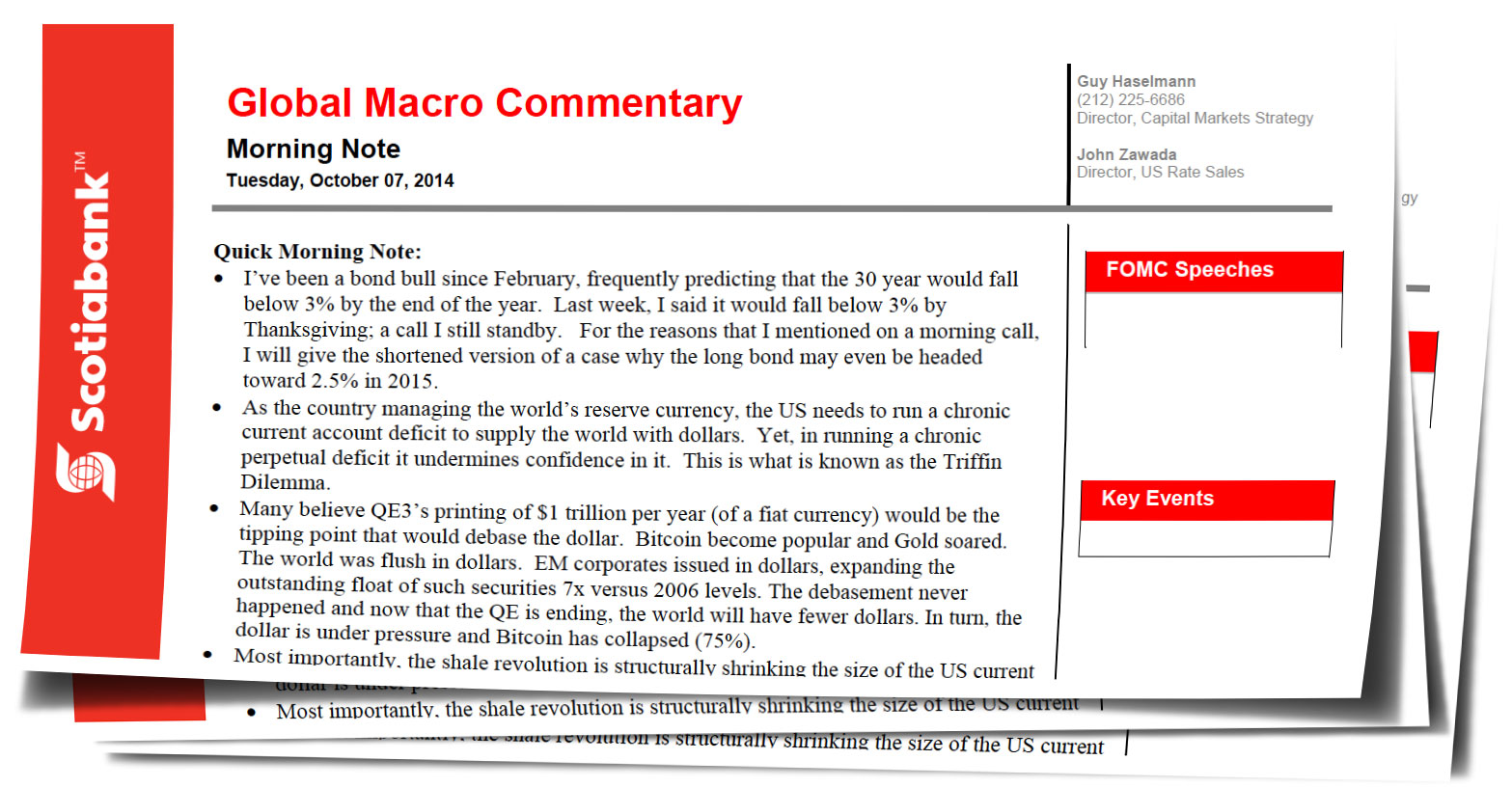by Guy Haselmann, Director, Capital Markets Strategy, Scotiabank GBM
Quick Morning Note:
• I’ve been a bond bull since February, predicting that the 30 year would fall below 3% by the end of the year. Last week, I said it would fall below 3% by Thanksgiving; a call I still standby. For the reasons that I mentioned on a morning call, I will give the shortened version of a case why the long bond may even be headed toward 2.5% in 2015.
• As the country managing the world’s reserve currency, the US needs to run a chronic current account deficit to supply the world with dollars. Yet, by running a chronic perpetual deficit, it undermines confidence in the dollar. This is what is known as the Triffin Dilemma.
• Many believe QE3’s printing of $1 trillion per year (of a fiat currency) would be the tipping point that would debase the dollar. Bitcoin become popular and Gold soared. The world was flush in dollars. EM corporates issued in dollars, expanding the outstanding float of such securities 7X, versus 2006 levels. The debasement never happened and now that the QE is ending, the world will have fewer dollars. In turn, the dollar soaring, while Gold is under pressure and the Bitcoin has collapsed (75%).
• Most importantly, the shale revolution is structurally shrinking the size of the US current account and fiscal deficits. The US is producing an extra million barrels of oil per year each year. Throw in a looming interest rate hike and the dollar is bid (more demand than supply). Since the US is exporting less capital, liquidity in being tightened abroad, particularly for countries whose currencies are tied to the dollar (China) or who depend on commodity production (EM).
• Reasons to like long Treasuries:
• To obtain more dollars, these countries can try to export more, or they can deflate their currencies. Either result is deflationary for the US.
• Bank regulation means that new bank deposits are going into Treasuries and away from loans and credit securities.
• Rule changes from the PBGC will increase demand over time for long dated Treasuries (asset allocation shift away from equities) as penalties for underfunding become more punitive.
• Bad demographics and higher debt levels will act as economic growth headwinds.
• The falling fiscal deficit will result in less Treasury issuance going forward.
• The Fed owns over 40% of all secondary Treasury securities 10-years and longer, so there is a shortage of high quality longer dated securities.
• Geo-political tensions are the highest in decades.
• China is reeling in its credit and real estate bubbles further hurting commodity exporters.
• Etc
• Equities and credit instruments will be hard pressed to justify valuations. With little pricing power and economic growth that is likely to be modest at best, revenue growth and profits are unlikely ti be adequate enough to justify for lofty valuations.
• I maintain my bullish view on long Treasuries and implore investors not to underestimate the upside potential (in price). Almost everyone is expecting much higher yields in the near term, but a 30-year drop in yield toward 2.5% should be considered as a possibility.
















